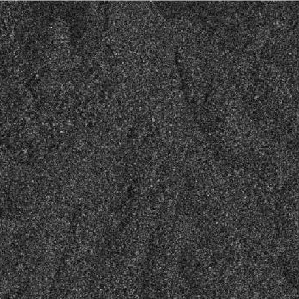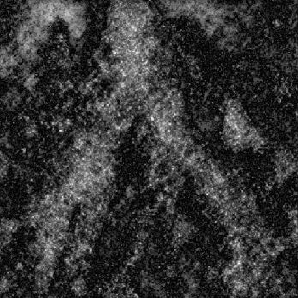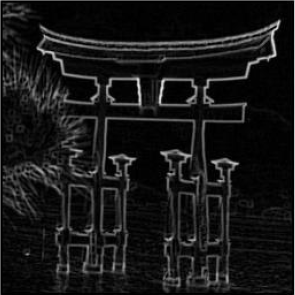Wavelet-based Multifractal Methods in Image Processing
Jacques L¨¦vy V¨¦hel
INRIA
Domaine de Voluceau
Rocquencourt
B.P. 105
78153 Le Chesnay Cedex
jacques.levy-vehel@inria.fr
fractales.inria.fr
¡¡
Overview
Fractal and Multifractal analysis have made important progress in recent years. As a consequence they are being used in an increasing number of fields, including geophysics, finance, medicine, chemical engineering, telecommunications and more. Image processing has also strongly benefited from these recent advances. New methods have been proposed for segmentation, classification, denoising, compression, watermarking, interpolation ... In many cases, the algorithms are based on wavelet decompositions, which allow for efficient implementation.
We shall start this tutorial with an explanation of how this wealth of applications was made possible: We shall show how the focus has moved from fractal image processing to fractal processing of images. In other words, recent successes were possible because generic fractal tools have been applied to arbitrary images. Basically, this means that one uses global or local measures of regularity to analyze and process any kind of data. The most well known example of this point of view is probably fractal image compression (Fig. 1), where arbitrary images are modeled as attractors of iterated functions systems.
 |
 |
Figure 1: A (non fractal) image (left) and its fractally compressed version (right). Compression ratio 46:1.
This paradigm will be demonstrated on various examples. The tutorial will
then present some basic theoretical notions in fractal/multifractal analysis
along with some of their current applications, which are described below. A
particular emphasis will be put on wavelet-based algorithms for fractal
analysis, in view of the important theoretical and computational links
between fractal and wavelet analysis. The basics of wavelet analysis will be
recalled.
Global Measures of Regularity
Global measures of regularity are typically used for applications such as classification and monitoring. The most well known measures of global regularity are fractal dimensions. We will focus on the regularization dimension. This dimension is specifically tailored for signal/image processing needs. It is a finer measure of global regularity than the classical box dimension, and may be estimated with better precision, with the help of the wavelet decomposition. A ¡°real life¡± application to automatic characterization enzymatic beet pulp degradation will be detailed.
Local Measures of Regularity
In contrast with global measure of regularity, local measures of regularity give an information specific to each pixel in the image. Powerful tools in this area are Holder exponents in their various versions. We will concentrate on the pointwise and local Holder exponents. We will show how to estimate these exponents on images, with the help of the wavelet decomposition. If time permits, we will present the basics of a new and very powerful local regularity characterization, called 2-microlocal analysis. As an application, we will present:
-
A denoising method suited to the case where the underlying signal is itself irregular, as for instance SAR images (Fig. 2).
-
An interpolation scheme that allows to preserve the perceived local regularity of images.
Multifractal Analysis
In some applications, most notably segmentation, the local regularity information is not sufficient. It must be supplemented with global information pertaining to the distribution of the Holder exponents. This is the aim of multifractal analysis. We shall give an easy introduction to the main multifractal spectra and explain their intuitive meaning in the field of image processing. Our application will be in edge detection (Fig. 3).
 |
 |
Figure 2: SAR image (left) and its local regularity based denoising (right).
 |
 |
Figure 3: Original image (left) and its multifractal based edge detection (right).
The presentation will be self-contained and will not require prior knowledge
in fractal/wavelet analysis. Some familiarity with basic notions in image
processing is assumed.
¡¡
Outline
-
Fractal signals versus fractal analysis, or how to replace limits with inferior limits.
-
Basics of wavelet analysis.
-
Regularization dimension and image classification.
-
Holder exponents and image denoising and interpolation.
-
Multifractal analysis, image denoising and edge detection.
Each theoretical tool will be illustrated with
an example computed with FracLab, a free software toolbox
for fractal processing of signals/images, for which a brief presentation
will be made. Many applications
will also be performed in real time with FracLab, allowing the audience to
get a real feel of how fractal
tools operate.
¡¡
Biography
J. L¨¦vy V¨¦hel graduated from Ecole Polytechnique and Ecole Nationale
Sup¨¦rieure des T¨¦l¨¦communications (France). He holds a Ph.D in Applied
Mathematics. He is the founder of the Fractales Lab. at INRIA, France. His
work is mainly concerned with the development of fractal, multifractal and
wavelet-based methods for signal/image processing. He has written two books
and more than 20 journal papers in this area. He has also supervised the
development of the FracLab toolbox for signal/image processing. He has been
involved in several applications of fractal image processing in industry,
mainly for satellite, medical and agro-alimentary image characterization,
denoising and segmentation. He is an associate editor for the journal
¡°Fractals¡±.